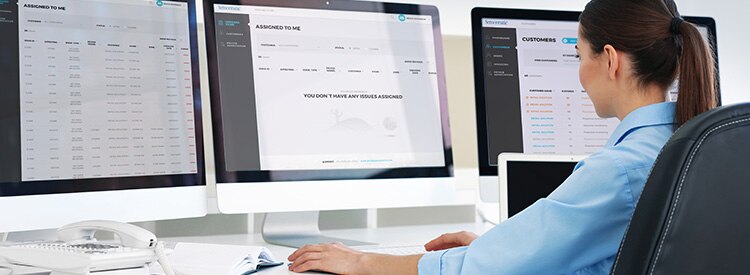Article
Associate Effectiveness Drives Seasonal Success for Apparel Retailers

Capitalizing on busy seasonal shopping periods is critical for apparel retailers. This year, the National Retail Federation predicts that total 2016 back-to-school sales will reach $75.8 billion, with a significant portion going toward apparel. The holiday season generates an estimated 19 percent of annual sales for apparel retailers, according to Cowen & Co., representing an even bigger opportunity.
In an increasingly competitive industry, apparel retailers are tasked with generating strong sales, turning a profit and meeting customer expectations. And a seamless in-store experience is essential to doing so.
Experiential retailing enters the mix
Providing an engaging in-store experience during peak seasonal shopping is a meaningful differentiator for apparel companies, with many turning to experiential tactics to do so. For example, some retailers host “shoppertainment” events during which they conduct in-store activities such as fashion shows or style classes. Additionally, with the rising popularity of athleisure wear, some retailers have integrated classes into their brick-and-mortar operations to attract customers and drive sales.
Associates are key
Store associates take center stage with these efforts, greeting customers, aiding with logistics, answering questions, assisting with fittings. and ringing up sales. And maximizing their effectiveness is critical for creating personal connections with customers that last beyond the moment. According to a Mindtree survey, shoppers who interact with a sales associate are 43 percent more likely to purchase a product, and their transactions have 81 percent more value, compared to those who do not interact with an associate.
But how can retailers ensure effectiveness during seasonal shopping periods, especially when store success hinges on a combination of full-time, part-time and temporary workers?
Leveraging key data to ensure informed decisions
Retailers commonly analyze sales per labor hour to understand productivity and schedule associates. This approach, which divides total sales by labor hours, is misleading. Why? Because it will always convey that by using fewer hours, sales will increase (based on a ratio).
Retailers that truly want to optimize their staffing levels, maximize the effectiveness of their staff, and deliver on their brand promise need to focus on the following three key metrics:
- Shopper-to-associate ratio (STAR): indicates the service level being provided by comparing the number of employees on the floor at a given time to the amount of shoppers in the store. The optimal STAR should be determined by organizational experts who understand a store’s service model and brand promise. For apparel retailers, STAR varies (e.g., highly trafficked department store versus a specialty boutique or expected high customer/associate engagement versus self-service).
- Sales-per-shopper: divides total sales dollars by the number of shopper visits. This accurately depicts the effectiveness of staff members by focusing on the things that are within a store team’s control (e.g., conversion rates, units per transaction, average ticket). It should be looked at in conjunction with STAR in order to accurately understand store-specific service execution.
- Traffic data: details the number of shoppers to visit a store within a given time frame. Measuring store traffic helps retailers identify each individual store’s “power hours,” or higher traffic volumes throughout the day. Knowing these power hours helps store managers put their best staff on the shop floor during peak traffic times to increase sales and conversion opportunities. It also helps them schedule breaks and shift changes or complete operational tasks during slower time frames.
By leveraging these relevant data sets, retailers are able to better understand their store performance and adjust operations appropriately in order to increase revenue – i.e., recognizing peak selling times, filling in coverage gaps, and identifying the optimum mix of experienced and new associates in order to maintain service.
Data and training
Traffic and sales-per-shopper data play an integral role in training by helping store managers understand how individual associates impact sales, from floor to stocking personnel. This information enables retailers to understand when they may need to alter schedules to pair associates who have complementary skills. It also can identify which employees need additional training in order to optimize their effectiveness.
Proper training and communication can go a long way in helping retain full-time workers and bring seasonal staff back again. At Nordstrom, for example, salaried employees receive an average of 30 hours of training per year and hourly employees receive approximately 60 hours, compared to the retail industry average of about seven hours. Not only does the company get high marks from its employees and a place on FortuneMagazine’s annual list of 100 Best Companies to Work For®, but it is well known for its exemplary customer service.
Increase seasonal sales with effective associates
To be successful during seasonal shopping periods, retailers need to thoughtfully enable associate effectiveness. Data and analytics play a significant role in identifying best practices and optimizing operations, including staffing. From back-to-school, to Christmas, to spring and summer breaks, the above best practices will help retailers drive shoppers to the store, encourage them to buy and keep them coming back throughout the year.
A version of this article was originally published in Apparel Magazine.
Explore Related Topics

Ready to see how Sensormatic Solutions can transform your bottom line?
Contact UsStay one step ahead with our articles, insights and latest news.
See more


